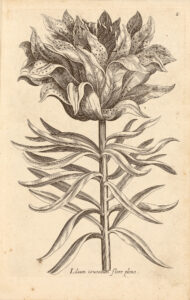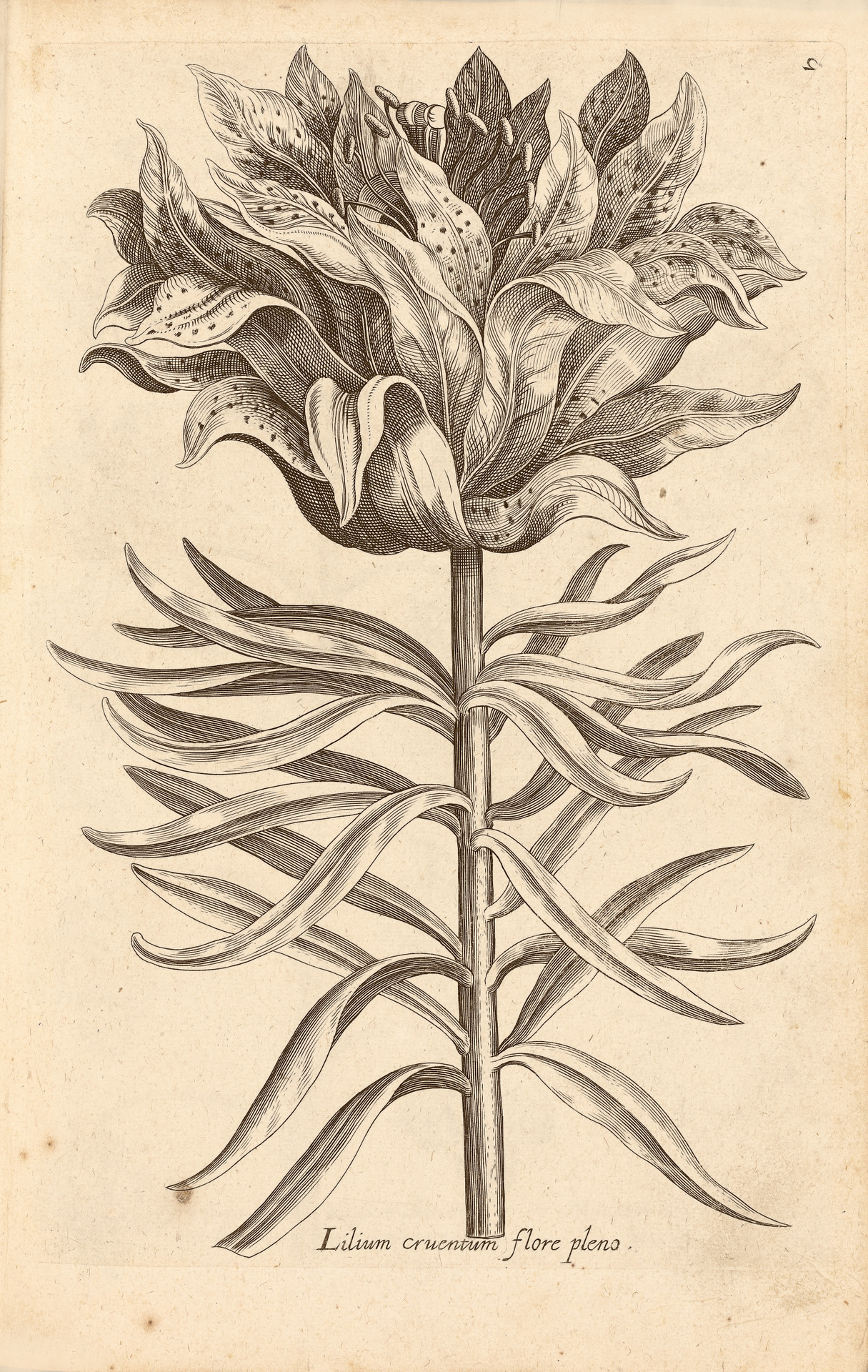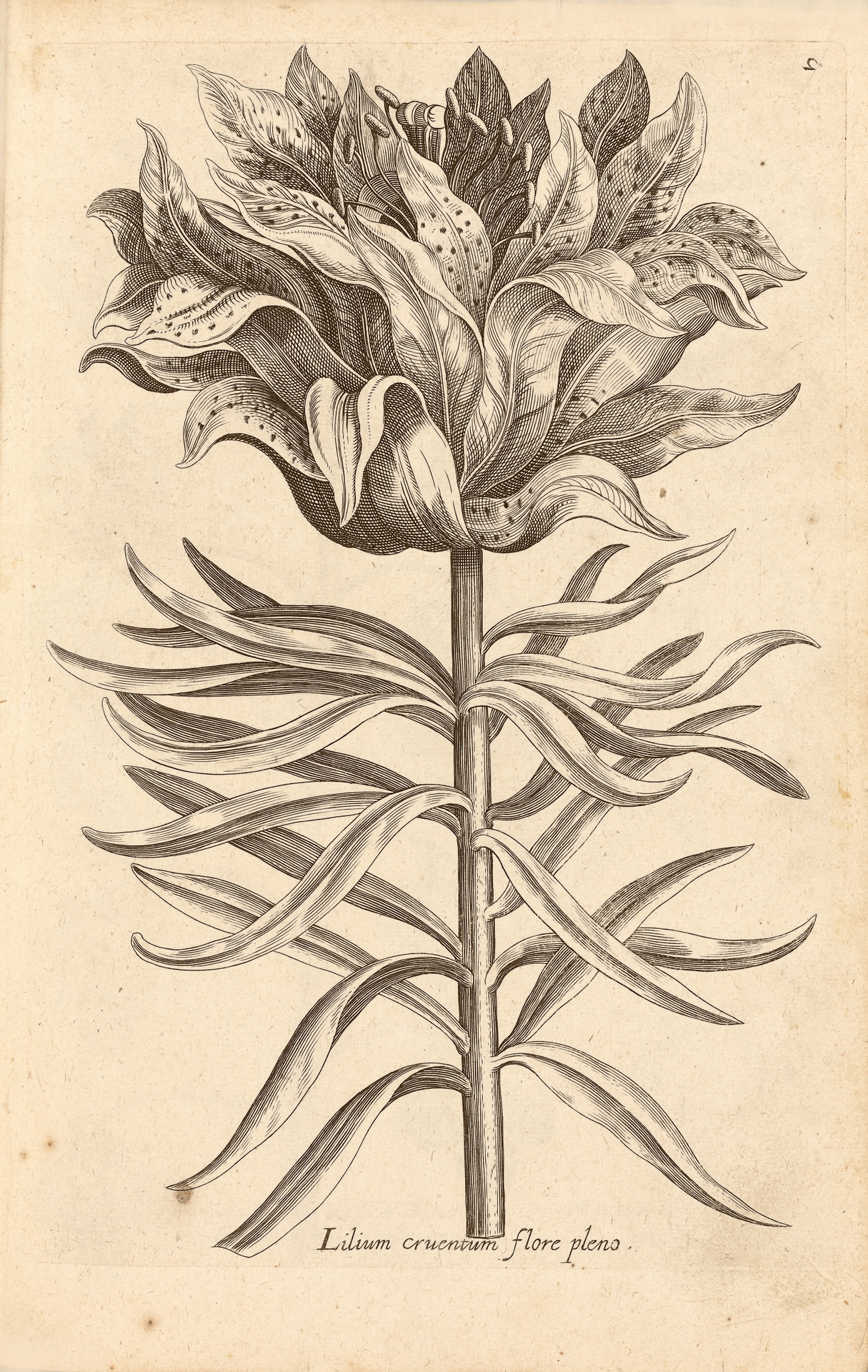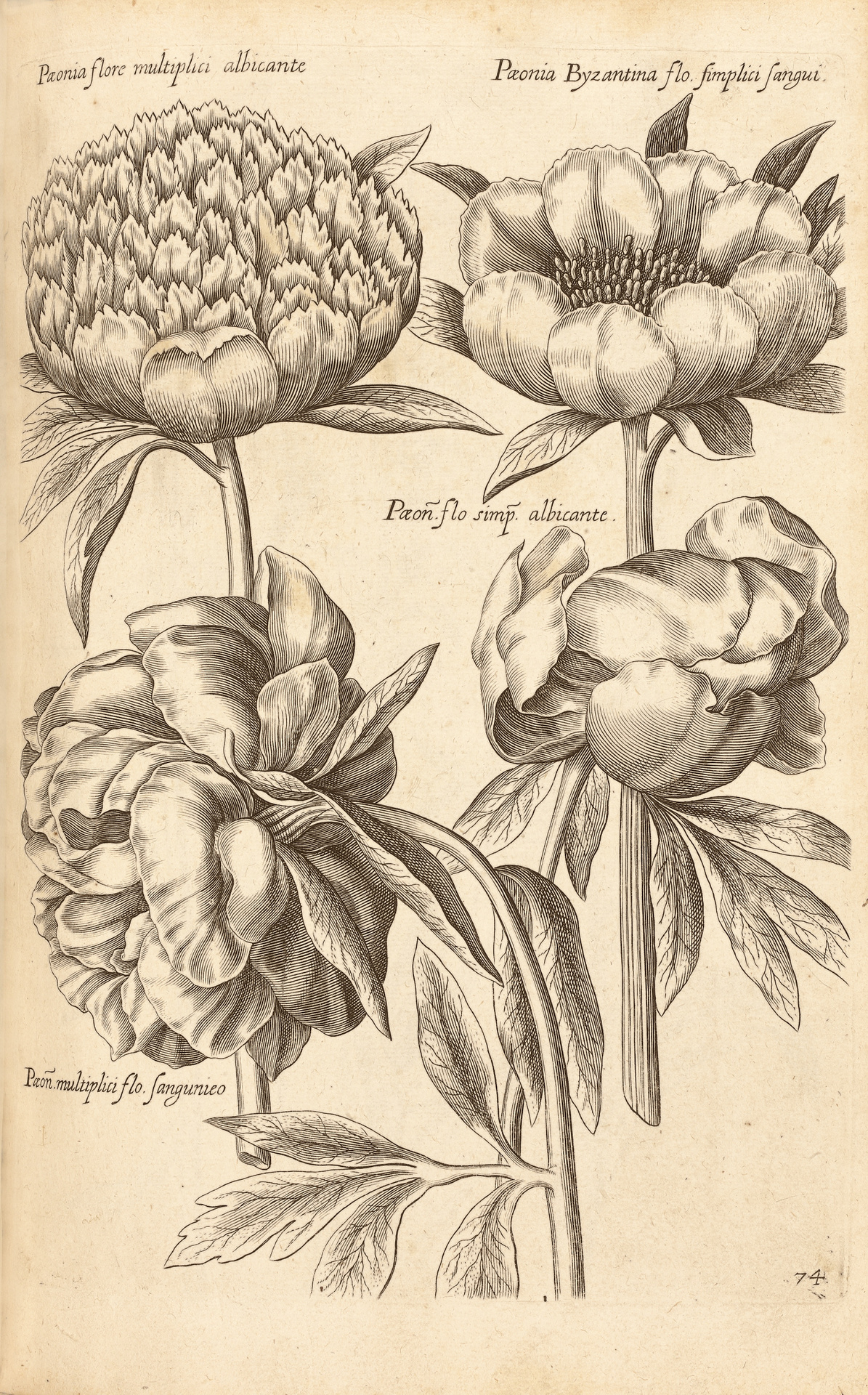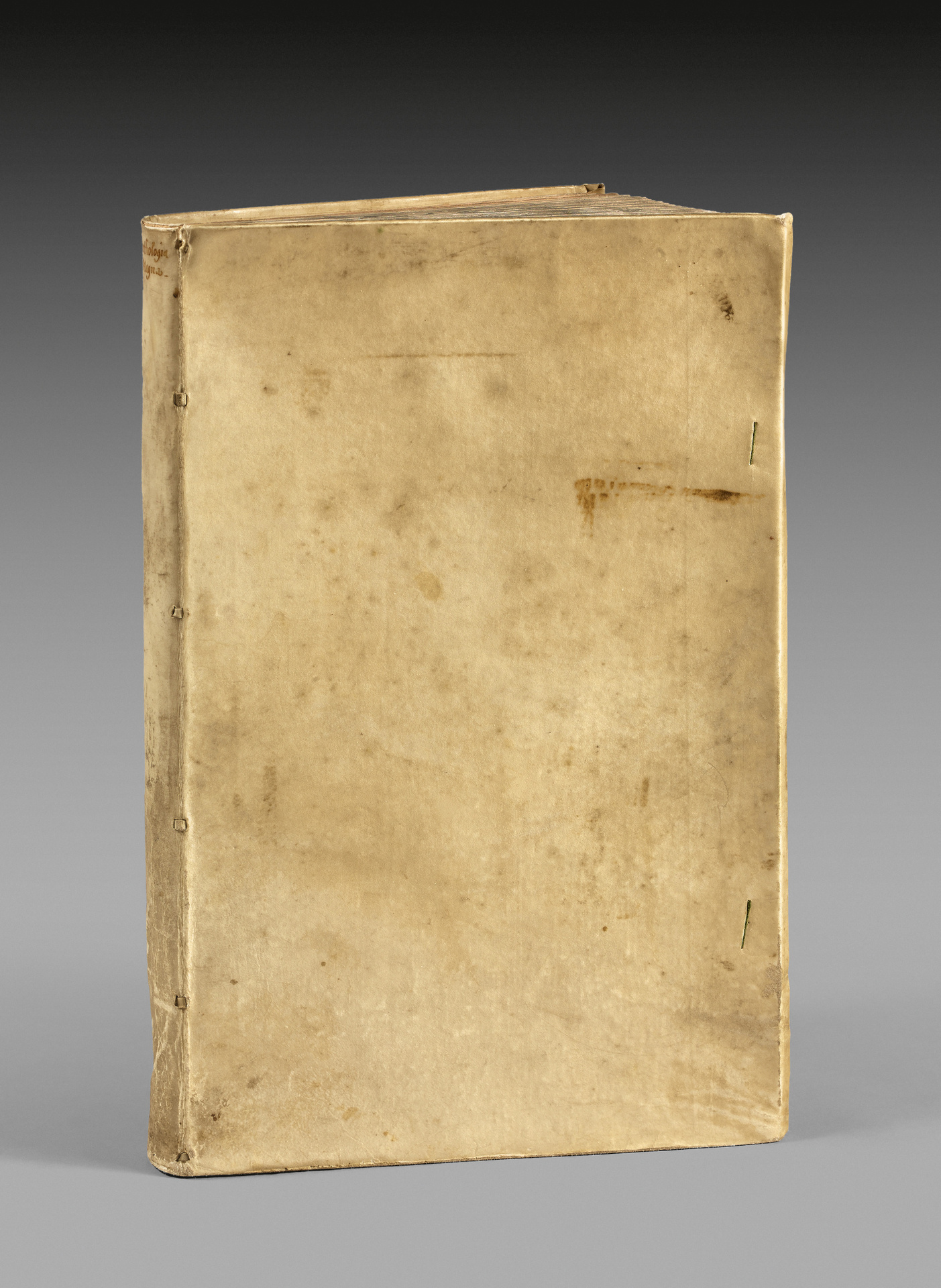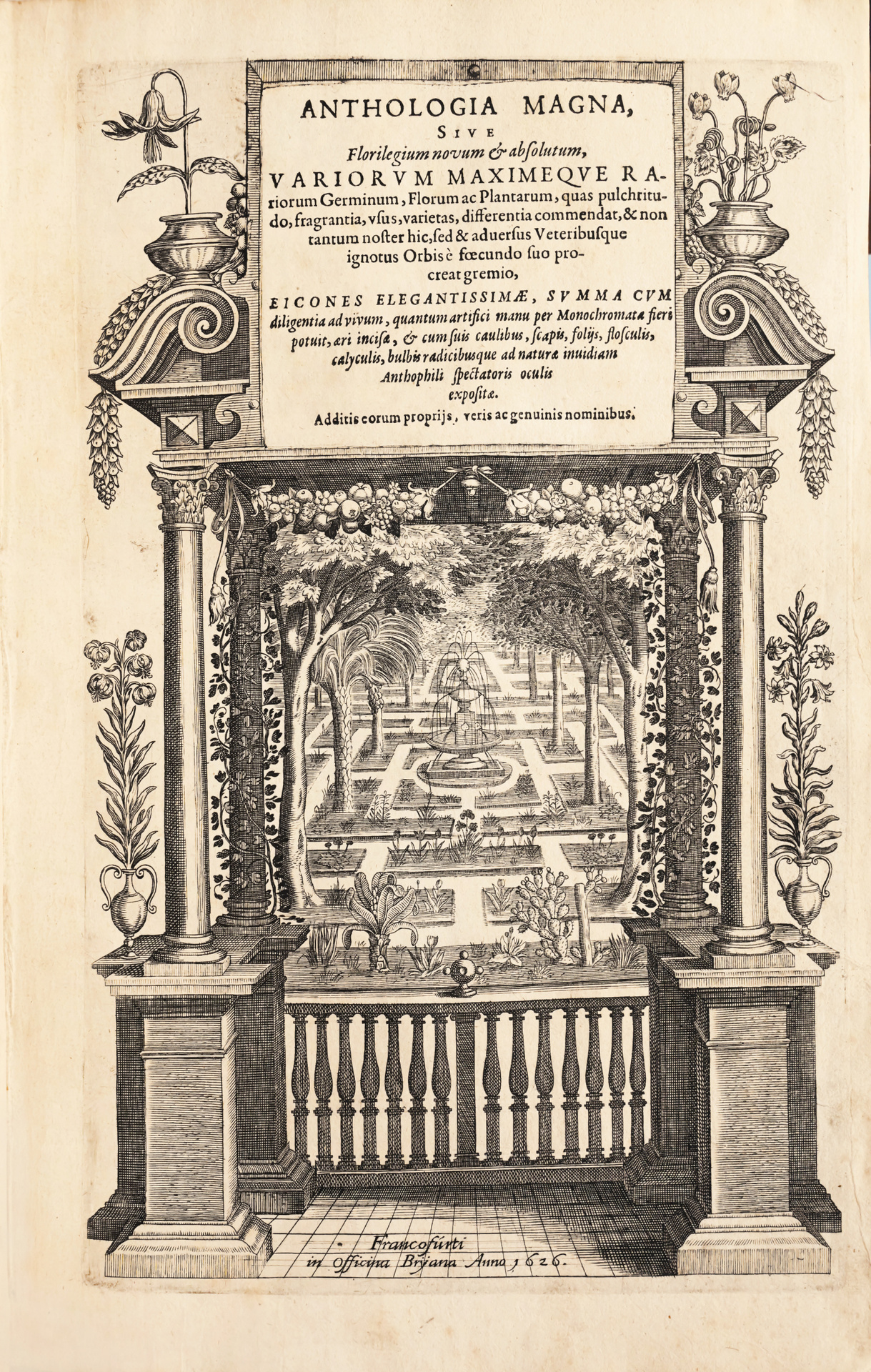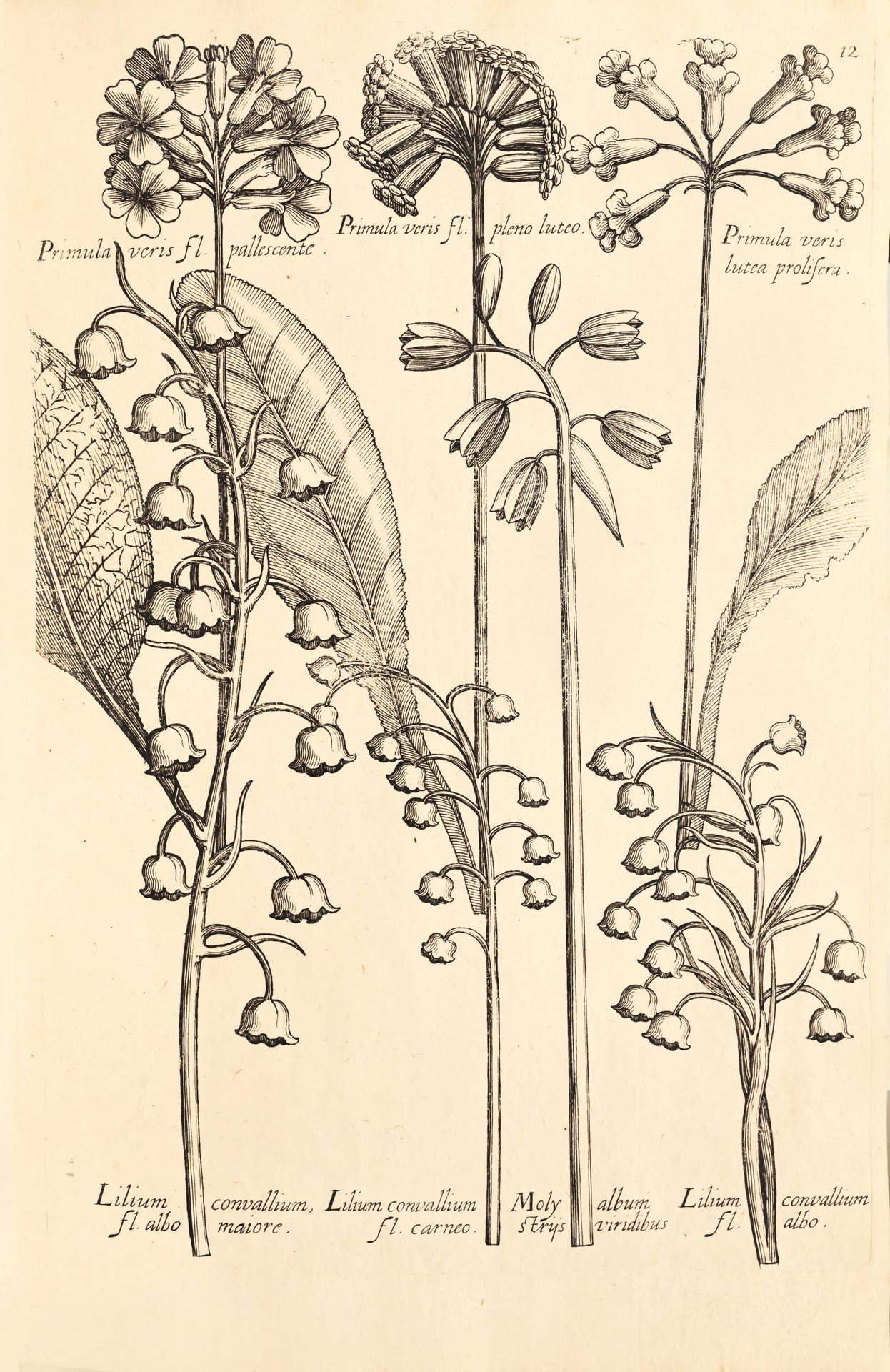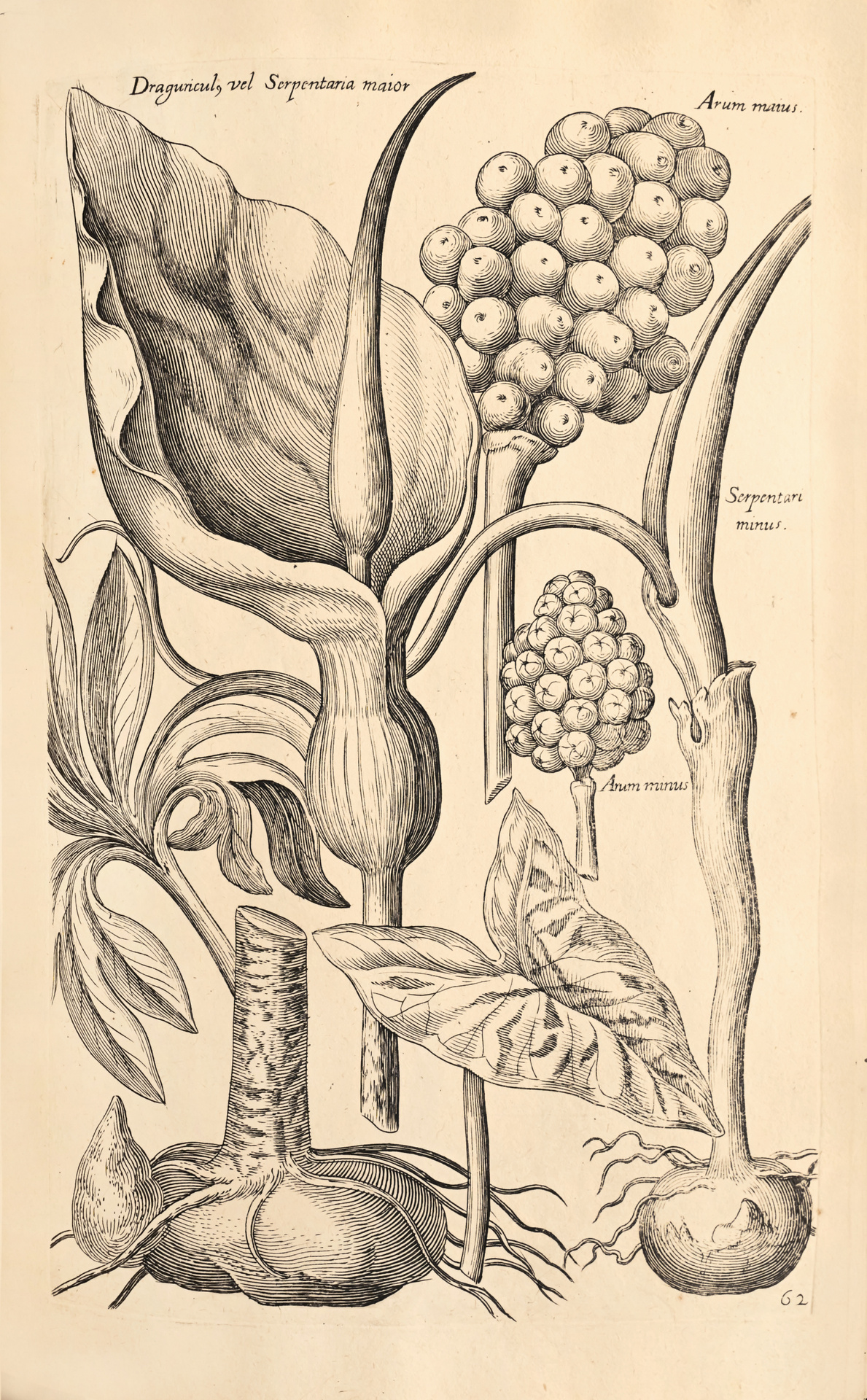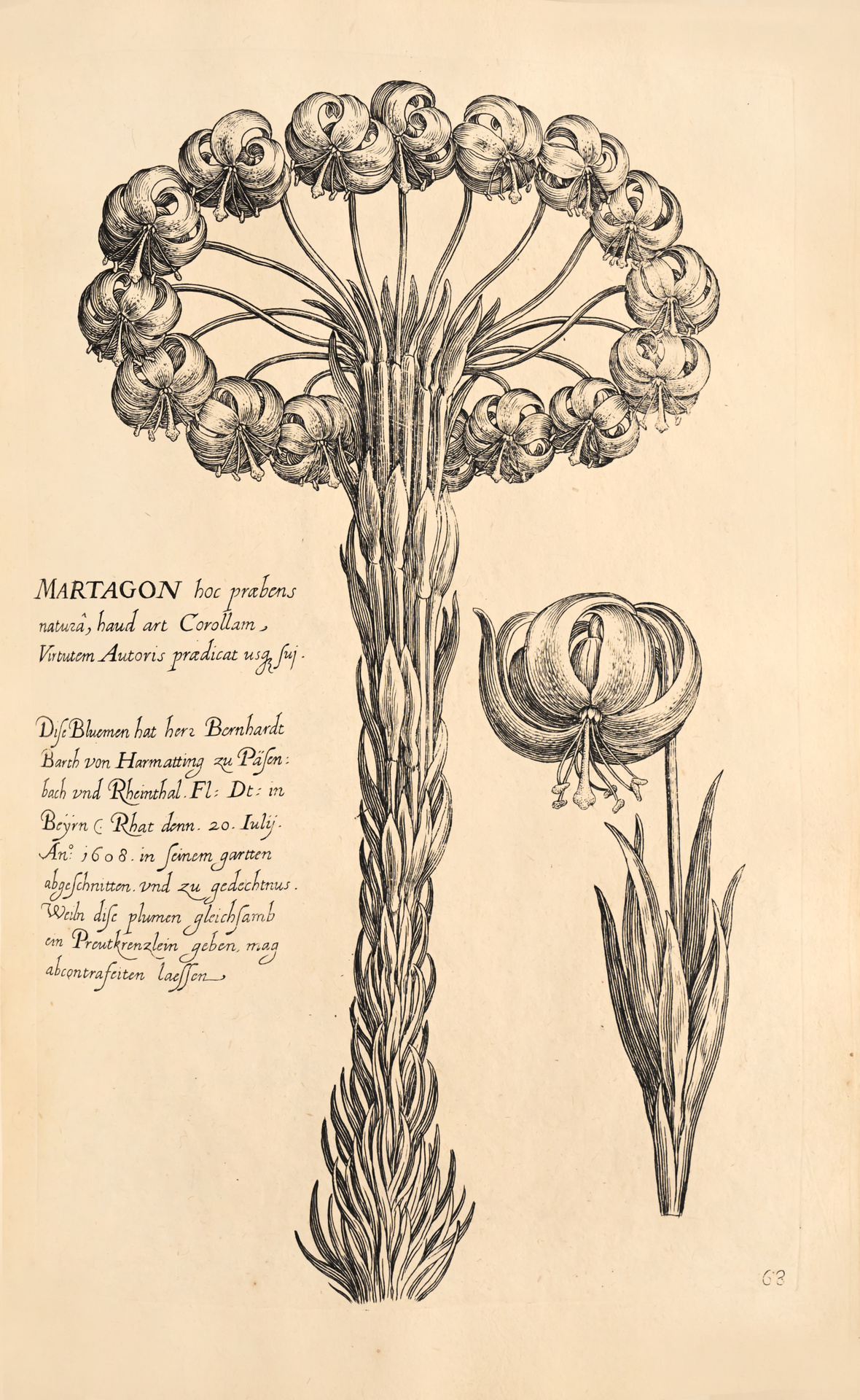Francofurti, in off. Brÿana, 1626.
Folio [313 x 195 mm] of (6) ll., fine engraved title (with a fountain at the centre, pots of lilies and cyclamens and swags of fruit adorn the structure), illustrated with 142 engraved plates (5 of which folding), numbered 1-23, 1-116. Numbers 37 and 50 were used twice, the last plate has no number. Many non-European plants appear in the Florilegium novum… Other plates show examples of the floral « monstrosities » that were cultivated in Baroque gardens.
Contemporary vellum binding, stains on lower board, title in ink on spine.
First edition.
Pritzel 1299 ; Nissen BBI, 273 ; De Belder 92.
This work is largely based on the author’s Florilegium novum, 1612, which has 87 plates that reappear here.
Complete copy of one of the most famous and influential of early florilegia, first published in 1612 with only 87 plates.
« The unsurpassed artistry for which de Bry was renowned throughout Europe emerges clearly in the plates of this florilegium. Each has been carefully composed, and the confident line of the engraving, with their fine shading, denote the hand of a true master ».
« Many of the figures on the plates are copies (in reverse) from Pierre Vallet’s Le Jardin du Roy, 1608, with the deletion of some of the insects shown in the Vallet, and with addition of bulbs for some of the plants. Nissen …. mentions Besler’s Hortus Eystettensis, 1613, and van de Pas’ Hortus Floridus, 1614, as other source material for De Bry’s later work » (Hunt).
Jean-Théodore de Bry, born in Liège in 1561, died in Frankfurt in 1623, was a skilled engraver who, according to Heinecken, surpassed his brother and even his father. He drew and engraved flowers for the Florilegium novum, Frankfurt, 1612-18, 3 folio vols.; reprinted in 1641, in Frankfurt, by Merian, under the title of Florilegii renovati et aucti; and for the Anthologia magna, 1626, or 1692, folio: these figures were useful to embroiderers and wallpaper makers as well as to botanists.
Complete copies, like this one, of the floral works of Jean-Theodrore de Bry preserved in their pure contemporary binding are very rare.
Belder’s copy of the Florilegium Renovatum of 1641 in ancient coloring “engraved title, B1-3 and the double-page garden plate skilfully remargined, a little worming in lower margins of last few plates; recently expertly rebacked preserving original spine (extremitites very lightly rubbed)” was sold for GBP 181 250 on 23 October 2010.
A superb complete copy of the original edition of 1626 preserved in its pure binding in contemporary overlapping ivory vellum.
See less information
